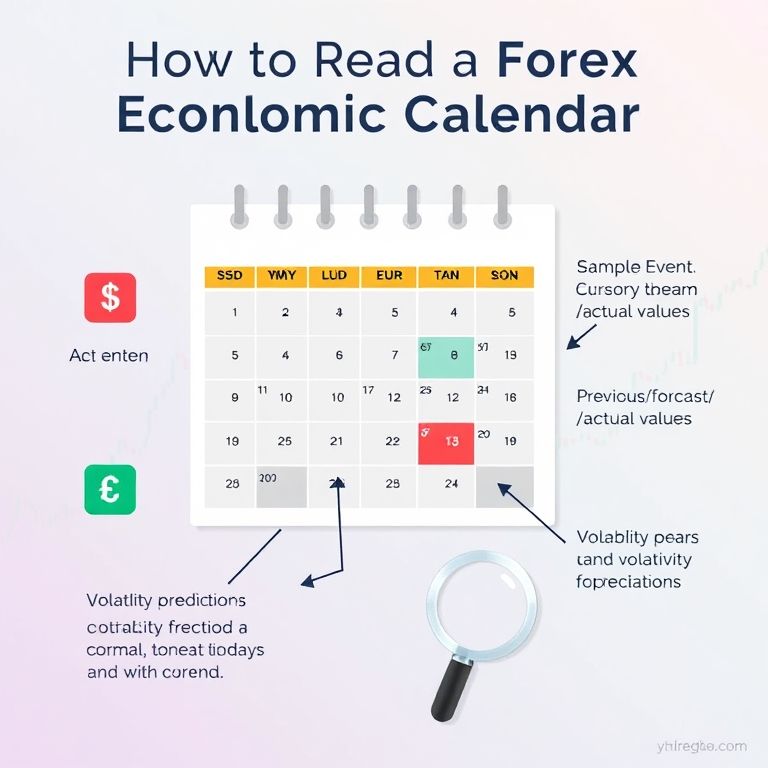How to read a forex economic calendar
How to Read a Forex Economic Calendar: A Practical Guide for Traders in 2025
Introduction
If you start your day hands-on with a cup of coffee and a glance at the forex economic calendar, you’re already ahead of the game. These calendars translate a jumble of numbers into what might move the market this session—jobs data, inflation, central bank hints, and more. The trick isn’t chasing every data point but learning to read the timing, the consensus, and the surprises. When you know what to expect and how the market tends to react, you can steer clear of overtrading and position yourself for edges, not noise.

What the calendar shows and how to read it
- Time and impact: Each release has a time stamp and an impact flag (low, medium, high). High-impact events—think payrolls, CPI, rate decisions—tend to spark bigger moves. If you’re trading, mark those moments on your chart and plan around them.
- Data points: You’ll see the forecast, the previous number, and the actual result. The delta (how far off the forecast is) matters more than the absolute value, because surprises drive volatility and shifts in momentum.
- Currency and region: Most calendars are organized by country (US, EU, UK). The initial move often spreads to related pairs, so you can think in terms of base and quote currency dynamics.
- Revisions and consensus: Markets care not just about the headline but about revisions to prior figures and how the new data fit or defy the consensus. A slightly mixed release can still trigger a meaningful shift if it alters the narrative.
Key points to watch and practical strategies
- Focus on context, not noise: A high-impact release doesn’t automatically mean you should trade. Look at the chart before the release, note current trend, support/resistance, and volatility regime. A big move in one direction may reverse if the price had overextended.
- The “kill zone” and risk controls: Many traders watch the 5–15 minute window around an release. Liquidity can dry up and spreads widen. Prepare by reducing size, widening stops, or stepping back from new positions entirely during the event.
- Cross-asset relevance: A strong US jobs report can lift USD across forex, equities, and even commodities. Conversely, a surprising miss may trigger risk-off behavior. Understanding cross-asset spillovers helps you avoid being caught on the wrong side of a correlated move.
- Real-world example: I’ve noticed that CPI surprises often stamp a clearer direction on major pairs like EUR/USD and USD/JPY, but intraday reversals can happen as traders reassess the inflation path. Having a predefined plan—entry, exit, and risk—saves you from chasing moves.
Reliability, risks, and learning across assets
- Across assets, the calendar is a compass, not a map. It marks potential volatility, but execution depends on liquidity, timing, and your setup. For stocks, indices, crypto, and commodities, the same principle applies: expect volatility, verify the context, and manage risk.
- In the era of decentralized finance and AI, data integrity matters. Oracles and on-chain feeds can augment traditional calendars, yet discrepancies and lag can appear. It’s wise to corroborate with multiple sources and keep a healthy skepticism about exact timing.
Future trends and the prop trading angle
- Smart contracts and AI-driven execution are shaping how events are priced. Automated orders around high-impact times, alert latency optimization, and backtesting event-driven strategies are moving from niche to standard.
- Prop trading firms prize fast access to data, scalable risk controls, and robust testing around calendar-driven strategies. The edge here is not just in forecasting but in disciplined execution and risk budgeting.
- The shift toward more diverse assets—forex, stocks, crypto, indices, options, and commodities—means a unified calendar view matters more. Understanding how a release ripples across markets helps you capitalize on cross-asset opportunities.
Slogan and takeaway
How to read a forex economic calendar isn’t just a skill; it’s a rhythm that many pros use to stay ahead. Master the rhythm, and you gain the edge in a crowded market. Read it, plan around it, and let the numbers help you decide when to pull the trigger.
Bottom line: the calendar is your steady guide through volatility, not a crystal ball. Keep listening to the data, stay disciplined, and you’ll turn moments of news into moments of opportunity.
YOU MAY ALSO LIKE